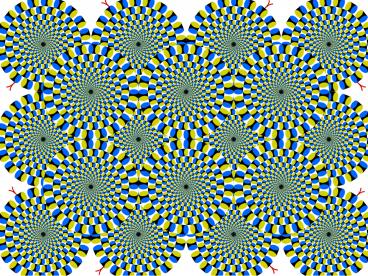EECS 270 Introduction to Sequential Logic - PowerPoint PPT Presentation
Title:
EECS 270 Introduction to Sequential Logic
Description:
EECS 270 Introduction to Sequential Logic Prof. Igor L. Markov – PowerPoint PPT presentation
Number of Views:175
Avg rating:3.0/5.0
Title: EECS 270 Introduction to Sequential Logic
1
EECS 270Introduction to Sequential Logic
- Prof. Igor L. Markov
2
Announcements and Reminders
- Homeworks are done
- Regrades are done
- Labs?
- Course materials on coursetools
- Previous lectures
- Solutions to homeworks practice exams
- Prof. Markovs office hours _at_EECS 2211
- Monday 130-2pm Friday 1130-1230pm
- Prof. Sakallahs OH _at_EECS 2114B
3
Final Exam
- Sample final posted
- Solutions on Monday
- Date December 15 (Thu)
- 700-900pm
- Location Dow 1013 and Dow 1006
- Coverage cumulative
- All course material since September
- Closed-book, no calculators/phones/PDAs
- Two sheets of notes allowed
4
Grading Policies Problem Types
- No-shows will get INC for the course
- INC lapsed into E/F will have to retake EECS 270
- Course grade
- 30 midterm average, 30 final exam
- 30 lab grade average, 10 homeworks
- 10-14 multiple-choice questions
- 3-4 free-form problems
5
Preparing for the Exam (1)
- Use slides and textbook(s)
- Most topics are covered in Wakerly
- Practice problem-solving!
- Review past homeworks and exams
- Sample exam posted
6
Preparing for the Exam (2)
- Key terminology concepts
- Mealy vs. Moore, SRAM vs DRAM
- MUXes vs deMUXes, Latches vs. flip-flops
- Identify key gates, circuits, theorems
- Identify core techniques
- Logic minimization using K-maps
- Deriving characteristic equations
- FSM analysis
- State minimization, etc
7
Preparing for the Exam (3)
- Identify boilerplate questions
- Formula equivalence
- Synthesizing a combinational circuit
- Synthesizing a sequential circuit
- Vice versa analysis(what does a given circuit
do?) - Understand how to usestandard components, e.g.,
- MUXes, decoders, adders/subtractors
- Latches, J-K FFs, counters, registers
8
Strategies for multiple-choice Qs
- Identify relevant standard task(s),complete
them, compare answers - Branch-and-bound
- Perform basic checks
- Eliminate whats clearly wrong
- Zoom in on differences
- Identify incorrect usage
- Use key identities, theorems
- Match standard circuit blocks
- Come up with counter-examples
9
Strategies for Free-Form Problems
- In what form is the answer expected?
- Is this a design or analysis problem?
- Recall related standard tasks, circuits,
theorems, techniques - Look for a transformation, decomposition,logic
equivalence, etc - Extend/reuse standard circuits
- Solve special/simpler cases,then generalize
- Assume fewer inputs at first
10
Final Exam QA
- Some topics within the scope
- Multi-level optimization dont cares
- Verilog material from the labs hazards
- Codes Hamming dist., error-detection, etc
- Partition refinement memories
- CMOS (but not layout or manufacturing)
- Expect a Verilog question
- There may be a lab question
11
Courses after EECS 270
- Consider taking
- Hardware EECS 370, 373, 470, (570)
- S/W Algos EECS 280, 281, 381
- CAD EECS 478, (527,578,579)
- Directed studies EECS 499
- Research opportunities
- UROP
- EECS summer fellowships (?)
- Check Web pages of professors
12
(No Transcript)
13
Chapter 1
- Binary signals
- Number systems
- Conversion between different bases
- Arithmetic operations(as algorithms)
- Gray codes
14
Chapter 2
- Boolean formulas vs comb. circuits
- Gates
- Boolean algebra
- Basic identities
- Algebraic manipulation
- Standard forms
- Minterms maxterms
15
Chapter 2 (contd)
- Two-level circuit optimization
- Two-level circuits
- K-maps (2-var, 3-var, 4-var)
- Prime implicants, essential primes
- POS vs SOP
- Dont cares
- Multi-level circuit optimization
- XOR and other gates
16
Chapter 3
- Combinational logic design
- Design concepts (reuse, etc)
- Design hierarchy, top-down design
- Verilog (no VHDL)
- Design objectives and trade-offs
- PLAs and read-only memory
- Not covered
- Technology mapping, cell libraries
- Verification and simulation
17
Chapter 4
- Combinational blocks
- Enabling, selection
- Decoders/encoders and their circuits
- Implementing functions with decoders
- Priority encoders
- Multiplexers and demultiplexers
- Circuit implementations
- Implementing functions with muxes
- No LUTs
18
Chapter 5
- Arithmetic circuits
- Adders (HA, FA)
- Ripple carry
- Negative numbers and subtraction
- Overflow
- Special cases
- Incrementing and decrementing

